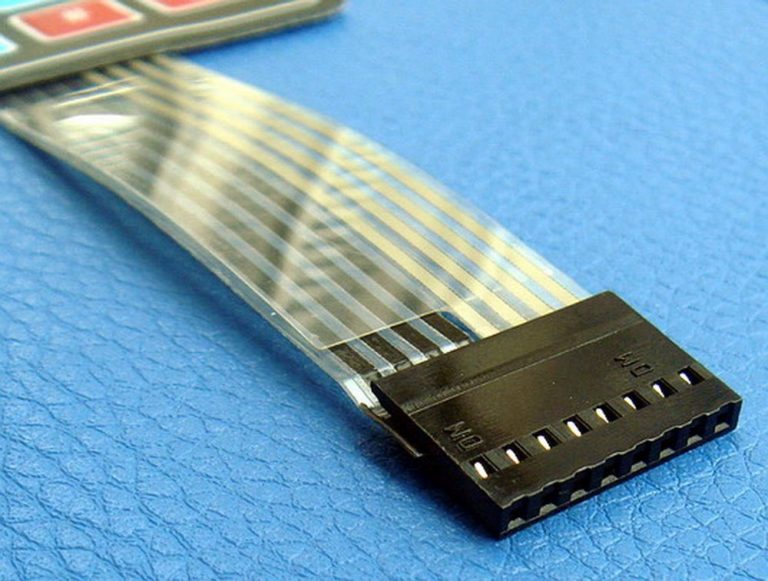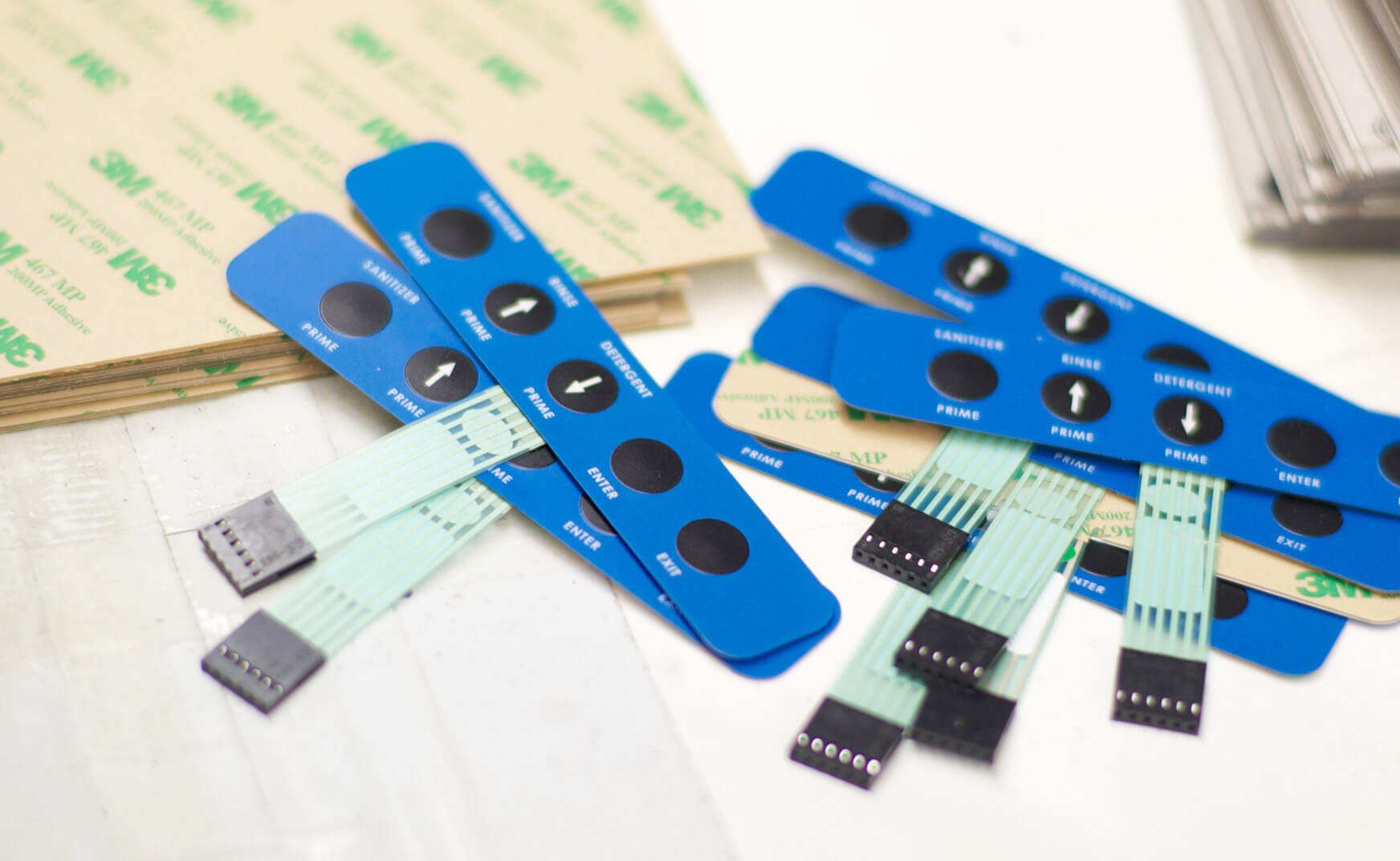The services offered by a specialized membrane switch manufacturer go beyond standard production.
The services offered by a specialized membrane switch manufacturer go beyond standard production.
Blog Article
All Concerning Membrane Switch: Recognizing Its Style and Functionality
When you think regarding the control interfaces in contemporary gadgets, membrane switches often come to mind. Allow's explore what collections membrane layer changes apart from other control systems.
What Are Membrane Layer Buttons?

Membrane layer switches can additionally be customized pertaining to shape, size, and graphics, allowing makers to create distinct user interfaces customized to details products. Overall, membrane layer switches play a significant duty in improving user experience throughout a broad range of applications.
Just How Membrane Switches Over Work
When you push a trick on a membrane layer switch, it activates a straightforward yet effective system. The leading layer, typically made of flexible material, presses down onto a conductive layer underneath it. This action bridges the void in between conductive traces, completing an electric circuit. As soon as the circuit shuts, it sends out a signal to the tool's controller, which interprets your input.
You'll notice that the responsive responses differs based on the button style, offering either a soft click or a more pronounced action. When you launch the key, the membrane go back to its original setting, reopening the circuit and quiting the signal. This process takes place almost instantly, guaranteeing a responsive individual experience.
Membrane buttons are preferred because of their sturdiness and resistance to dirt and moisture, making them perfect for various applications, from household appliances to clinical tools. Recognizing this procedure helps you value their extensive use.
Trick Components of Membrane Buttons
Recognizing the essential elements of membrane layer buttons is basic for understanding their performance and design. At the core, you'll discover the graphic overlay, which offers the aesthetic user interface for individuals. Underneath that, there's a spacer layer that divides the circuit layers, ensuring that they don't make contact till pushed. The circuit layer is where the magic happens; it consists of conductive traces that complete the circuit when you press the button. An additional crucial aspect is the adhesive backing, enabling the switch to abide by surfaces securely. The protective layer guards versus ecological elements and wear, expanding the button's lifespan. Each part plays a considerable function in making sure reliable efficiency and customer interaction. By recognizing these elements, you'll gain insight right into just how membrane layer switches over operate and their importance in different applications.
Products Utilized in Membrane Layer Change Layout
The performance and durability of membrane layer changes greatly rely on the materials used in their design. You generally come across polyester and polycarbonate as main substrates due to their excellent strength and flexibility. These products stand up to scratches and chemicals, making them optimal for requiring environments.
The conductive layers typically use silver or carbon, picked for their reliability and conductivity. membrane switch manufacturer. Silver supplies exceptional efficiency, while carbon is a click to read cost-effective choice. For the overlay, you may think about a matte or glossy surface, depending upon your aesthetic requirements and individual experience
Adhesives play a necessary duty too; they bond layers securely and guarantee longevity. Ensure to choose adhesives that hold up against environmental elements like temperature level and moisture. Don't neglect the importance of an excellent printing strategy for graphics, as it improves both capability and aesthetic charm. Picking the ideal materials will assure your membrane layer switch stands the examination of time.
Style Factors To Consider for Membrane Layer Switches
While making membrane layer buttons, it's essential to take right into account various variables that influence their functionality and individual experience. Begin by concentrating on the format and switch dimension; make sure they're intuitive and easy to navigate. Consider the responsive responses you intend to offer-- will customers need a recognizable click or a softer touch? In addition, think of the materials you'll make use of, as they'll impact resilience and aesthetic appeals.
Do not overlook the graphic style; clear labeling and color contrast are substantial for visibility. Confirm your design fits ecological aspects, like moisture or temperature level variations, which can influence efficiency. Remember the relevance of testing prototypes with genuine customers to collect responses and make necessary adjustments. This iterative process helps you refine the design, validating it fulfills both useful and visual requirements properly. By meticulously taking into consideration these components, you'll develop a membrane layer switch that enhances usability and complete satisfaction.
Applications of Membrane Buttons
Membrane switches are functional parts located in various applications, from industrial tools to customer electronics. You'll see their effect in machines that require sturdy user interfaces and in devices that profit from streamlined designs. Comprehending these applications assists you appreciate the capability and usefulness of membrane layer switches in everyday technology.
Industrial Equipment Usage
When you're looking to boost the capability of industrial tools, membrane layer switches provide a dependable option that combines toughness with straightforward design. These buttons are best for rough environments, giving resistance to dirt, dampness, and chemicals. Accept membrane layer switches to simplify your procedures and boost overall efficiency.
Customer Electronic Devices Combination
In the domain of consumer electronic devices, membrane switches play a vital duty in boosting user communication and device performance. You'll find them in tools like microwaves, push-button controls, and gaming consoles, offering a seamless means to interact with modern technology. Their sleek layout enables for very easy combination into numerous items, making controls user-friendly and straightforward. With their capacity to include graphics and backlighting, you can appreciate a contemporary visual that enhances the tool's general appearance. Membrane layer switches additionally guarantee toughness and resistance to pop over here dirt and wetness, expanding the lifespan of your electronics. By picking membrane switches, you enhance not just the capability however likewise the style of your devices, making daily interactions smooth and enjoyable.
Advantages and Disadvantages of Membrane Layer Buttons
While membrane layer buttons use a range of benefits, they additionally come with some downsides that you must consider. One considerable benefit is their portable style, making them excellent for space-constrained applications.

Membrane switches can have a much shorter life expectancy contrasted to mechanical switches, specifically under heavy usage. They can also be much less responsive, which may impact individual feedback during procedure. Stabilizing these pros and disadvantages will aid you identify if membrane layer switches are the appropriate fit for your task.
Regularly Asked Questions
How Long Do Membrane Layer Switches Typically Last?
Membrane layer changes typically last between 5 to 10 years, relying on usage and ecological problems. You'll intend to evaluate elements continue reading this like wear, direct exposure to moisture, and temperature level variations to assess their longevity effectively.
Can Membrane Layer Switches Be Personalized for Details Designs?
Yes, you can customize membrane layer buttons to fit particular styles (membrane switch manufacturer). You'll have the flexibility to choose shades, forms, and layouts that match your job's demands, guaranteeing they blend perfectly with your general aesthetic
What Is the Price Array for Membrane Layer Change Production?
The cost variety for membrane switch production generally falls between $1 and $10 per unit, depending on aspects like style complexity, amount, and products. You can obtain quotes from manufacturers to locate the best choice.

Are Membrane Layer Switches Water Resistant or Immune?
Membrane buttons can be developed to be water-proof or immune, depending upon products utilized and building techniques. If you need them for damp environments, ensure you specify those requirements throughout the style procedure.
Just How Do Membrane Switches Compare to Traditional Buttons?
Membrane buttons are generally thinner and a lot more adaptable than typical buttons, supplying a smooth layout. They're typically less complicated to clean and integrate, however might not offer the tactile feedback you're made use of to with mechanical alternatives.
Conclusion

Report this page